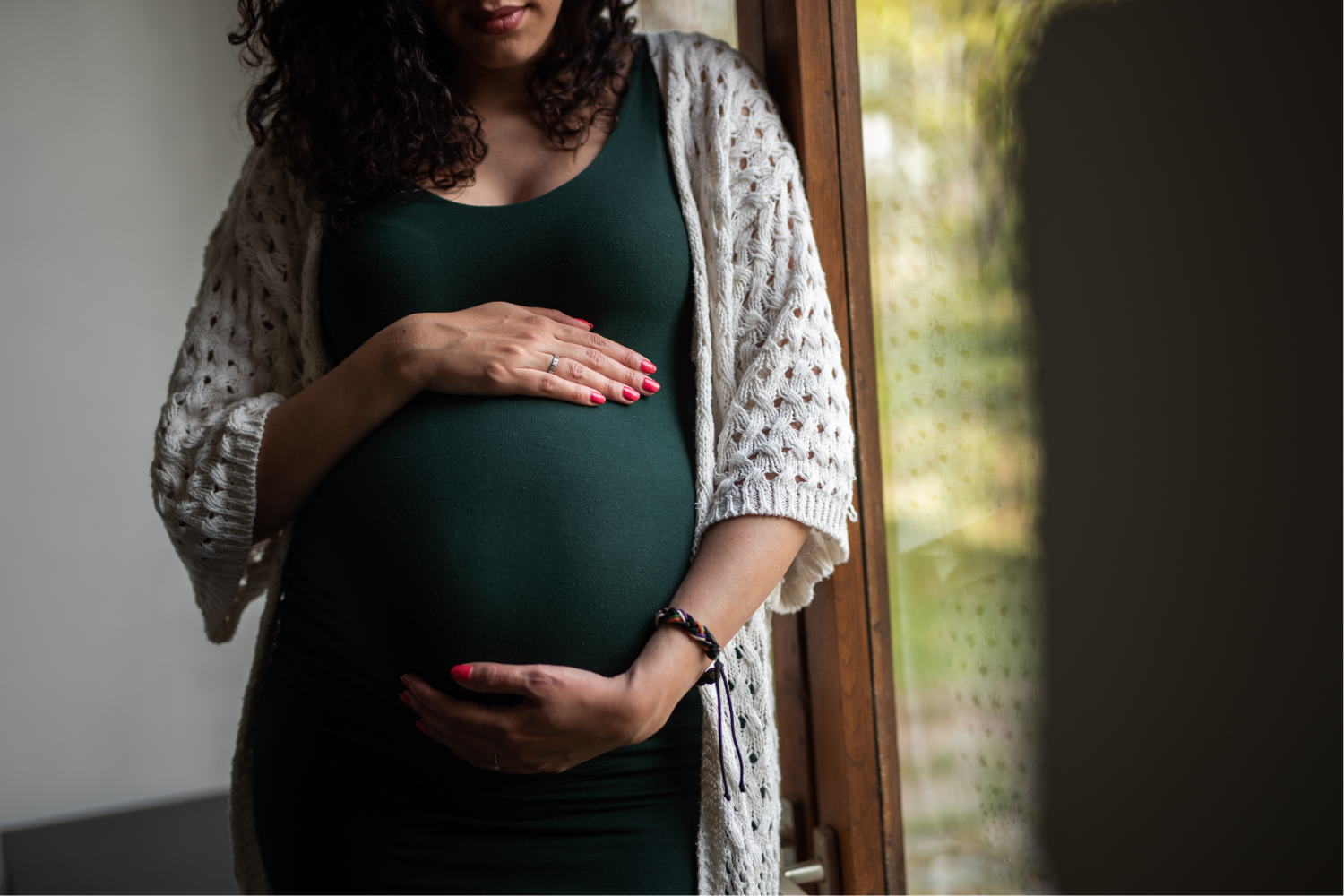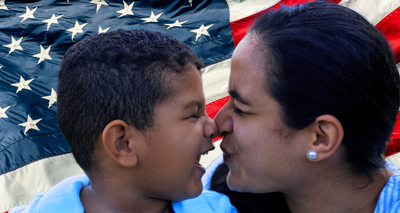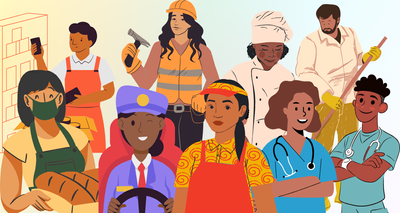On November 5, U.S. Americans will head to the polls to elect their next president. Up until Election Day, candidates Kamala Harris and Donald Trump have focused their efforts on winning the support of the U.S. Latino community and not ignoring U.S. Latinas and voters, the decision-makers of our households and communities and the fastest-growing female demographic in the last decade. According to Pew Research, U.S. Latinas make up approximately 17 percent of the country’s adult female population.
Harris has appealed to U.S. Latinas by promising to protect abortion rights, make health care and housing more affordable, promote policies to reduce the cost of living, and implement an assault weapons ban which is a type of gun control (women are impacted by gun violence especially in domestic violence cases and our greater community with mass shootings like the Uvalde school shooting). Meanwhile, Trump has pledged to restore the economic policies from his first term to boost business growth and job creation, and he plans to toughen immigration policies to prevent criminals from crossing the border.
TargetSmart CEO Tom Bonier posted on X that voter registrations among Latinas aged 18 to 29 increased by 149.7 percent, and by 78.3 percent for Latinas of all ages compared to July 2020. It's important to note that a higher percentage of Latinas turn out to vote than Latino men.
Of the nearly 65 million Latinos in the U.S., roughly 22.2 million are women. According to the Latino GDP Report, led by researchers from California Lutheran University and UCLA and funded by Bank of America, Latina women contributed $1.3 trillion to the U.S. economy in 2021.
In fact, the states with the largest Latina populations are California with 8.5 million, Texas with 6.5 million, Florida with 3.5 million, New York with 2.2 million, and Arizona with 1.3 million.

How Latina Voters Can Influence Abortion Policies
When discussing abortion rights, many people link the issue to sexual irresponsibility or promiscuity. However, abortion rights cover much more than that! Thousands of women need to undergo the procedure due to threats to mothers’ health and pregnancy abnormalities, often detected after the first five or six weeks, the period during which U.S. states with restrictions allow abortions. In theory, if the mother's life is at risk, doctors can perform an abortion. But there’s a lack of transparency around the issue, and many doctors refuse to perform the procedure out of fear of losing their medical license, facing up to 99 years in prison, or being fined at least $100,000.
This abortion restriction disproportionately impacts vulnerable and marginalized women like Latinas. According to a recent analysis by the National Partnership for Women & Families and the National Latina Institute for Reproductive Justice, 6.7 million Latinas of reproductive age live in 26 states where abortion has already been banned or is at risk of being banned.
Following Texas’ abortion ban, maternal mortality rates rose across all racial groups, unlike the rest of the country, which remained at 11 percent during the same period, according to a study by the Gender Equity Policy Institute (GEPI). The data reveals that, among Hispanic women, maternal deaths increased from 14.5 per 100,000 live births in 2019 to 18.9 in 2022. For white women, the deaths nearly doubled from 20 to 39.1 per 100,000, while Black women saw a significant increase from 31.6 to 43.6 per 100,000 live births.
“There’s only one explanation for this alarming difference in maternal mortality. All the research points to Texas’ abortion ban as the primary driver of this disturbing rise,” said Nancy L. Cohen, president of GEPI.
The Case of Samantha Casiano
Samantha Casiano highlights the pain and trauma many women are enduring without access to abortion. Casiano and her husband Luis Villasana have four children and she became pregnant in 2022. At 20 weeks, she was told her baby had anencephaly, a condition where the baby is born without parts of the brain or skull and would die hours after birth.
Doctors informed Casiano that due to Texas laws, she could not terminate the pregnancy. Her options were to travel to another state for help, give birth to a stillborn, or watch her baby die shortly after birth. Like many Latinas, she lacked the resources to travel, so she continued with the pregnancy. When she gave birth, she watched her baby gasp for air, and after four hours of agony, the baby passed away. Casiano is just one case of a few with the most recent story of the death of Josseli Barnica who was denied an abortion due to a miscarriage and confusion over Texan ban, SB 8. How many women including U.S. Latinas will lose their lives?
We are outraged by the death of Josseli Barnica because of Texas’ medically unnecessary abortion ban.
— National Latina Institute for Reproductive Justice (@LatinaInstitute) October 30, 2024
Read our statement from Lucy Ceballos Felix, Associate Director of Texas at Latina Institute on the death of Josseli Barnica 👉
Harris has consistently supported abortion rights, arguing that the government should not interfere with women's decisions about their own bodies. She has pledged that, if elected, she will sign any law that restores the protections outlined in Roe v. Wade, which the Supreme Court overturned in 2022. In contrast, Trump has maintained his opposition to abortion, reinstating and deferring that the issue be addressed by the states.
“Women will be happy, healthy, confident, and free... they won’t think about abortion anymore,” Trump said at a rally in Pennsylvania.
Many barriers prevent Latinas from accessing medical services. In fact, 3 million Latinas living in Texas, Florida, and Arizona are in financially unstable or low-income situations, limiting their ability to seek family planning services. Language is another barrier, as more than a million Latinas are not fluent in English, and Spanish-language information is often incomplete or inaccurate. According to the report, 850,000 women in states where abortion is banned have children under three years old, and not having access to abortion could jeopardize their families' financial stability and their physical or mental health.
The impact of voting to halt these abortion bans cannot be underestimated. Organizations like Latinas for Reproductive Justice have begun mobilizing Latino voters, urging everyone to participate in the upcoming elections and raise their voices in support of reproductive rights.

Housing Policies Play a Key Role in the Election
For the Latino community, homeownership is a significant issue. As of the 2021 census, 48 percent of Latinos own their homes, leaving more than half renting or holding mortgages. Homeownership is a path to generational wealth. According to a survey by BSP Research for UnidosUS and Oportun, families with incomes below $29,000 annually are the most affected. However, 40 percent of those earning more than $50,000 a year also report financial insecurity.
Kamala Harris has proposed a plan to build 3 million new housing units over the next four years. The project aims to expand the Low-Income Housing Tax Credit (LIHTC), create tax incentives for affordable housing developers, and provide a $40 billion fund for local housing innovations. Harris also plans to eliminate tax benefits for large investors who purchase significant amounts of single-family homes. Additionally, the plan will offer a $25,000 down payment assistance to first-time homebuyers who have been responsible renters, with extra benefits for first-generation homeowners whose parents did not own a home.
On the political front, former President Donald Trump has also put forth a proposal to address housing affordability, suggesting the opening of federal lands for construction, in line with his 2017 Opportunity Zones program. In addition, his policies will lead to stricter eligibility for Medicaid, housing vouchers, and the elimination of safety net programs for Latino low-income working class families which leads to Project 2025.
Project 2025 Threatens the Fundamental Rights of Latino Communities
Project 2025 outlines a proposed conservative political agenda that could shape Donald Trump’s potential second administration. While Trump has distanced himself from the proposal, his campaign aligns with many of its points, including immigration, reproductive rights, civil rights protections, and energy policies.
Latino communities could be severely impacted by the strict immigration policies, which call for increased deportations and the criminalization of immigration. This proposal creates uncertainty for those who have yet to secure legal status and exacerbates racial discrimination and violence, leaving vulnerable communities feeling unsafe and marginalized. The project calls for ending asylum programs, terminating the Flores Settlement Agreement, promoting immigration reforms that prioritize nuclear family immigration over extended family-based programs, and continuing to build border walls.
“Congress must end the Flores Settlement Agreement by explicitly setting nationwide terms and standards for family and unaccompanied detention and housing. Such standards should focus on meeting human needs and should allow for large-scale use of temporary facilities (for example, tents),” the Mandate for Leadership: The Conservative Promise 2025 states.
The 922-page document also emphasizes rolling back green energy policies in favor of fossil fuel energy, and it proposes more elimination of Diversity, Equity, and Inclusion (DEI) programs, including those promoting LGBTQ+ agendas within government agencies like USAID.
Project 2025 offers a series of proposals aimed at rapidly changing the government and the country, restricting many rights and opportunities gained over the years. This will increase vulnerability and marginalization in various areas, highlighting the critical need for active participation and organization within these communities to fight against policies that threaten our well-being and rights.
In summary, if any party prevails, U.S. Latinas could feel the effects under either presidential candidate. Staying informed about public policies and understanding what’s at risk can empower us, as these decisions have the potential to shape our lives significantly.






